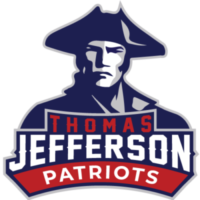The code of conduct at Jefferson is focused on helping every student become their highest and best self. All adults are expected to teach, model, and reinforce behavior and expectations relative to these two goals.
Preventing bad behavior
Good teaching is the first and best defense against bad behavior. The next step to preventing most behavioral problems is to directly teach (and model) good behavior. At that point, if correction is needed, follow this process:
Teacher Process to Correct Student Behavior
If the behavior causes disruption to the teaching and learning process, teachers address it with the student:
- Verbal Warning – Restate expectations to a group or individuals and clarify how a behavior did not meet expectations.
- Teacher Student Conference – Privately restate expectations with individual student. *Optional: Document in Ed Handbook as Minor Incident.
- Think Time Form – Have students complete a Think Time Form in the classroom, hallway or buddy classroom. Document in Ed Handbook as Minor Incident.
- Parent/Guardian Contact – Keep the conversation focused on finding a solution. Speak from a place of concern and ask the parent/guardian for help or suggestions. Document in Ed Handbook – teacher discretion on minor incident or office referral.
- Office Referral – Document in Ed Handbook as Office Referral.
- Immediate office referrals that skip all previous steps include: Physical Harm, Threats of Harm, Weapon, Gang Behavior, Drugs/Alcohol, Vandalism, Truancy, or Harassment.
Administration Process to Correct Student Behavior
- With first referral, discuss concern with student, teacher, and parent/guardian to hopefully correct behavior. Keep student in In-School-Suspension for class period.
- With additional office referrals, the administrator will determine course of action. Possible consequences include: Lunch Detention, In-School-Suspension, After School Detention, Parent Meeting, and Suspension.












